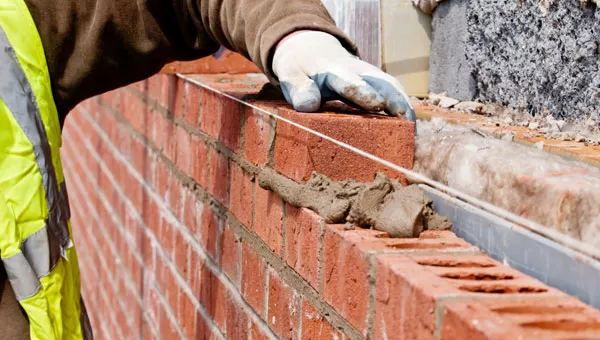Unlocking the Secrets of Lasting Stonework Building Practices for Eco-Friendly Buildings
Among the myriad approaches to eco-friendly structure, sustainable stonework building and construction stands out as a time-tested and sturdy technique that holds a wide range of untapped potential. From the option of materials to innovative building and construction methods, the tricks to achieving sustainability within stonework building are complex and intriguing.
Benefits of Lasting Stonework Building And Construction
Embracing lasting masonry building practices not only decreases environmental impact yet also uses lasting financial advantages to contractors and neighborhoods. By making use of products like recycled bricks, obstructs, and rocks, builders can considerably decrease the carbon footprint of their tasks while advertising resource performance. In addition, sustainable stonework building and construction strategies, such as correct insulation and thermal mass residential or commercial properties, can improve energy performance within structures, causing decreased operational expenses with time.
Additionally, the toughness and durability of masonry frameworks add to long-term financial advantages. Buildings created using lasting stonework techniques typically need much less upkeep and repair service, converting to cost savings for building contractors and home owners. The durability of stonework materials also makes sure that frameworks continue to be steady and safe, decreasing the requirement for frequent renovations or replacements.
Eco-Friendly Masonry Products
Making use of environmentally friendly masonry products is a pivotal step towards enhancing the sustainability of building and construction techniques and lessening environmental influence while making the most of long-term financial benefits. Lasting masonry materials are sourced, produced, and utilized in a manner that minimizes total ecological effect. Lasting concrete blocks integrate recycled aggregates and may include enhanced insulation buildings, adding to energy performance in buildings.
In addition, natural materials like adobe, rammed planet, and straw bundles supply outstanding thermal mass residential or commercial properties, lowering the requirement for home heating and cooling energy. These products are commonly in your area offered, promoting regional economic climates and minimizing transportation-related carbon emissions. By choosing environment-friendly stonework products, construction projects can considerably reduce their ecological impact and contribute to the production of much healthier, much more lasting developed atmospheres.
Energy-Efficient Masonry Methods
Energy effectiveness plays an important function in boosting the sustainability of masonry building and construction methods. By executing energy-efficient masonry techniques, contractors can considerably decrease the overall energy intake of a building, leading to reduced operational costs and a smaller sized ecological footprint. One crucial energy-efficient stonework technique is making use of thermal mass, which involves including dense products like concrete or brick into the building's framework to absorb and save warmth. This assists manage interior temperatures, lowering the demand for mechanical heating and discover this cooling systems.

Developments in Sustainable Stonework
Recent innovations in sustainable stonework practices have brought around innovative methods that are reshaping the construction sector. One such development is the development of self-healing concrete, which uses germs installed within the concrete to recover splits autonomously. This breakthrough not just reduces upkeep expenses but additionally enhances the resilience of stonework frameworks, adding to their sustainability.
Another noteworthy development is making use of recycled aggregates in masonry building and construction - masonry contractor. By incorporating materials such as crushed ceramic waste or recycled glass right into concrete blends, building contractors page can lower the ecological influence of building jobs while keeping architectural stability. This method not just draws away waste from garbage dumps but also conserves all-natural sources, making it an essential development in sustainable stonework building and construction
Furthermore, the integration of digital layout tools, such as Building Info Modeling (BIM), is changing the means masonry structures are prepared and created. BIM enables even more exact estimations, decreased product waste, and boosted power performance, eventually causing more sustainable structure methods. These advancements jointly represent a promising future for lasting masonry building and construction in the age of environmentally friendly buildings.
Future Trends in Stonework Sustainability
With the innovative strides made in lasting masonry methods, the future fads in stonework sustainability are poised to further reinvent the building and construction industry. One of the crucial patterns shaping the future of masonry sustainability is the increased assimilation of modern technology. Advancements such as Structure Details Modeling (BIM) and digital reality simulations are being made use of to optimize stonework building and construction processes, leading to lowered material waste and enhanced power performance in buildings.
Furthermore, the development of novel lasting products is established to play a substantial function in improving the eco-friendliness of stonework building and construction. masonry contractor. Innovations like self-healing concrete, click for more recycled aggregates, and bio-based binders are acquiring grip for their ability to minimize ecological effect while maintaining architectural integrity

Conclusion
Finally, sustainable stonework building techniques supply countless advantages for environment-friendly buildings. By utilizing eco-friendly materials and energy-efficient techniques, masonry can add to a much more sustainable developed atmosphere. Innovations in lasting stonework are continually being developed to better improve the ecological efficiency of structures. Looking towards the future, the pattern of stonework sustainability is expected to grow, causing more eco-friendly and energy-efficient building and construction practices in the years ahead.